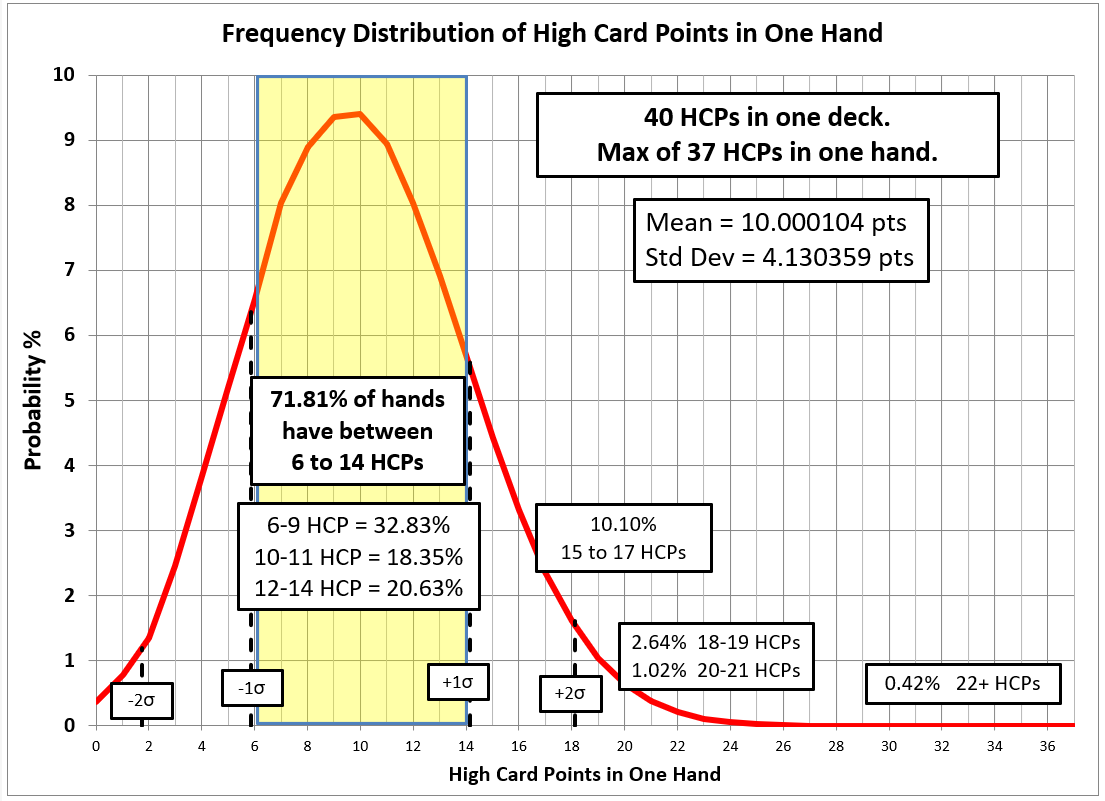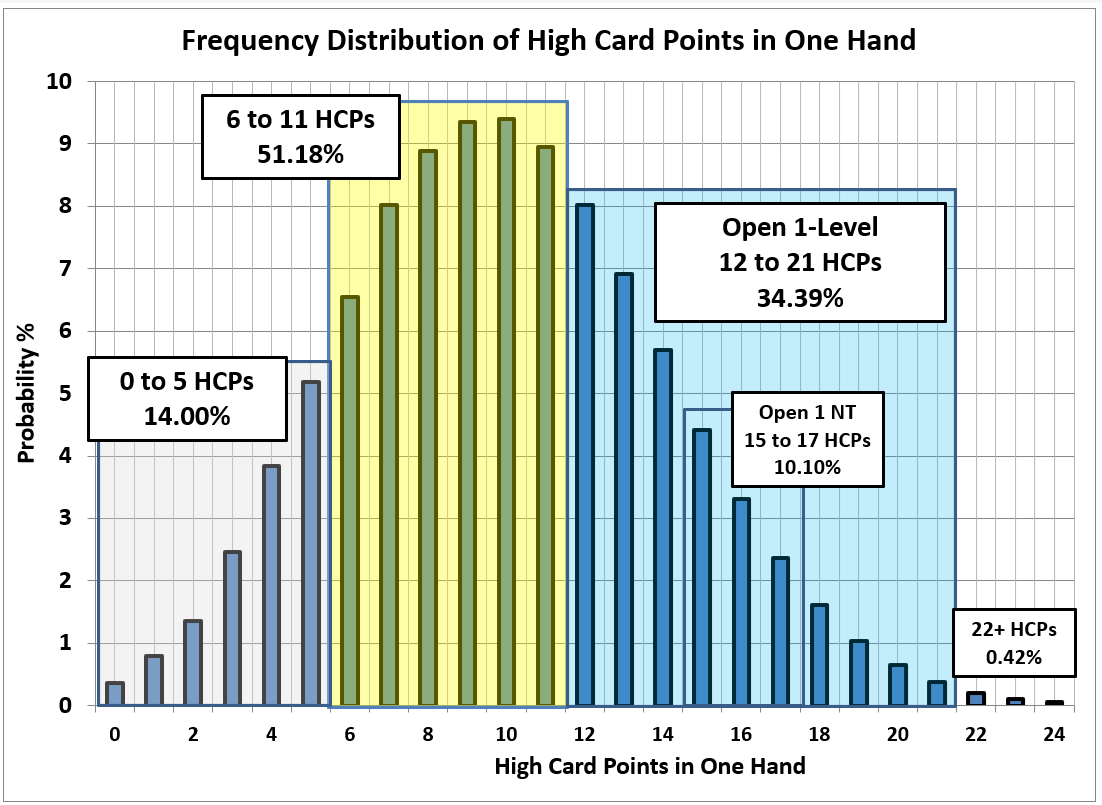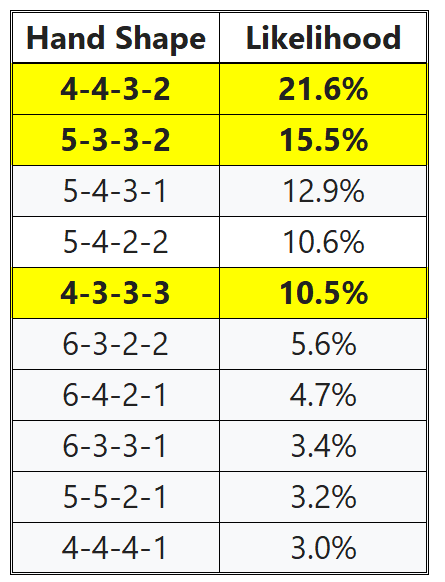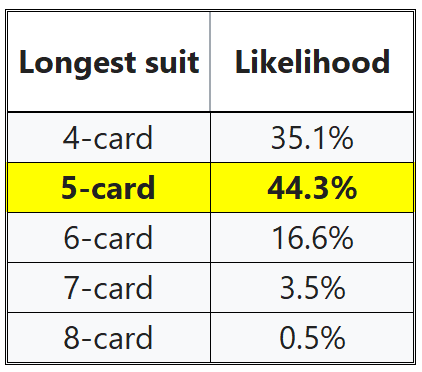Distribution of High Card Points
The likelihood of a hand containing a certain number of high card points is plotted in the graphs (histograms) below:


The following tables summarize the likelihoods of a hand holding a certain range of high card points.
Weak Count (0 to 11 HCPs) - 65.3%
• 0 pts (Yarborough) - 0.40%
• 1 to 5 pts - 14.00%
• 6 to 9 pts - 32.83%
• 10 to 11 pts - 18.35%
• 0 pts (Yarborough) - 0.40%
• 1 to 5 pts - 14.00%
• 6 to 9 pts - 32.83%
• 10 to 11 pts - 18.35%
Opening Count (12 to 21 HCPs) - 34.39%
• 12 to 14 pts - 20.63%
• 15 to 17 pts - 10.10%
• 18 to 19 pts - 2.64%
• 20 to 21 pts - 1.02%
• 12 to 14 pts - 20.63%
• 15 to 17 pts - 10.10%
• 18 to 19 pts - 2.64%
• 20 to 21 pts - 1.02%
Strong Count (22+ HCPs) - 0.42%
• 22 to 24 pts - 0.38%
• 25 to 27 pts - 0.04%
• 22 to 24 pts - 0.38%
• 25 to 27 pts - 0.04%

